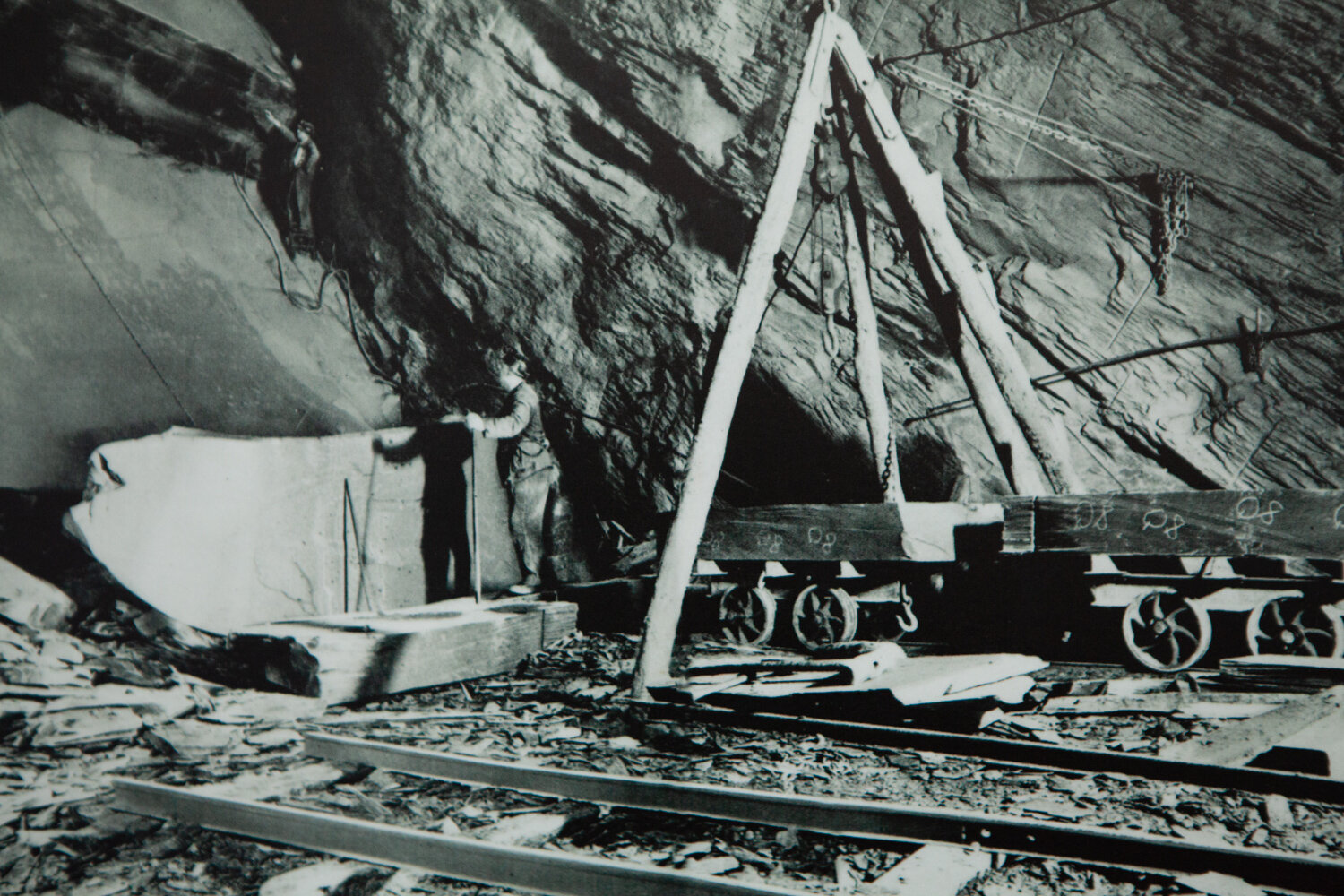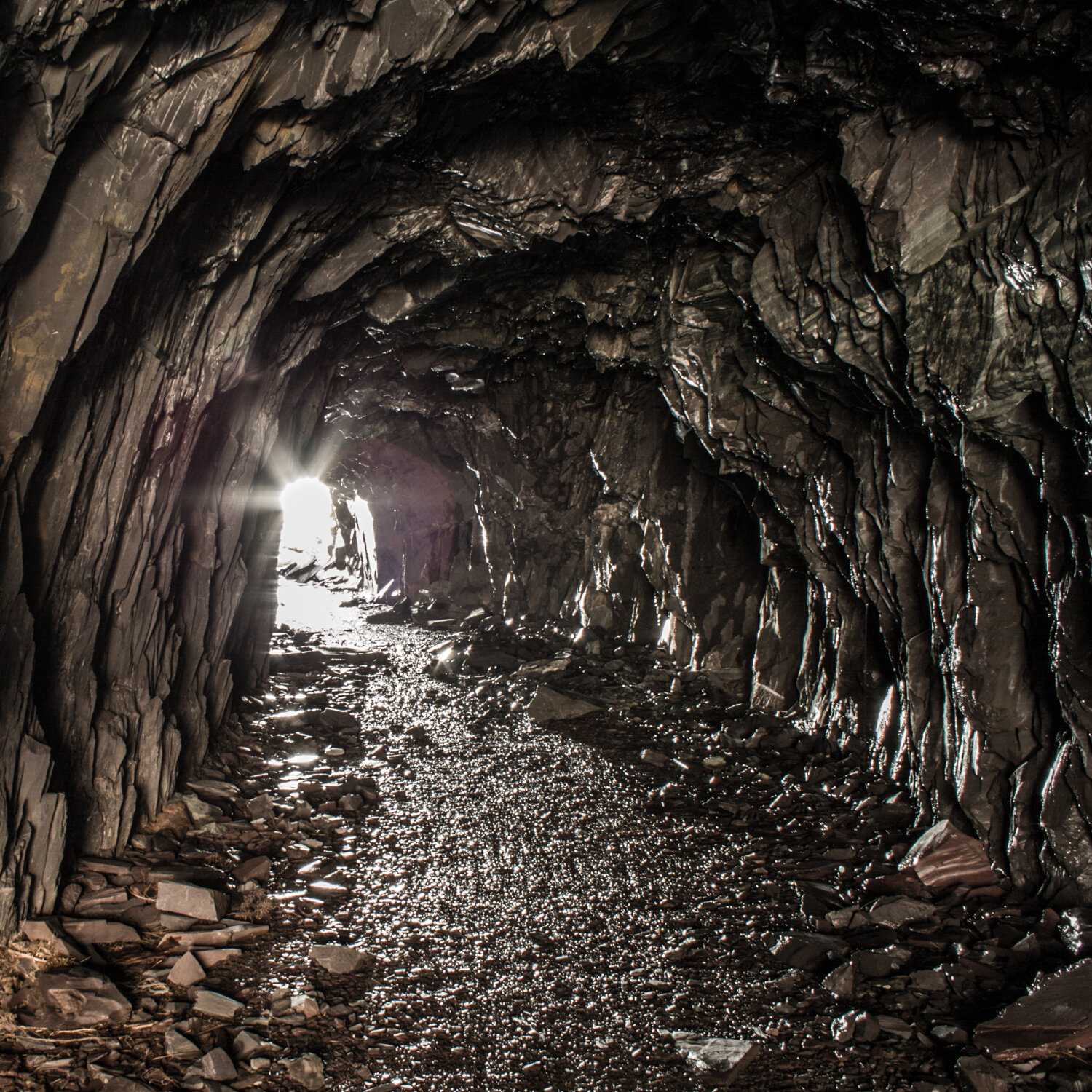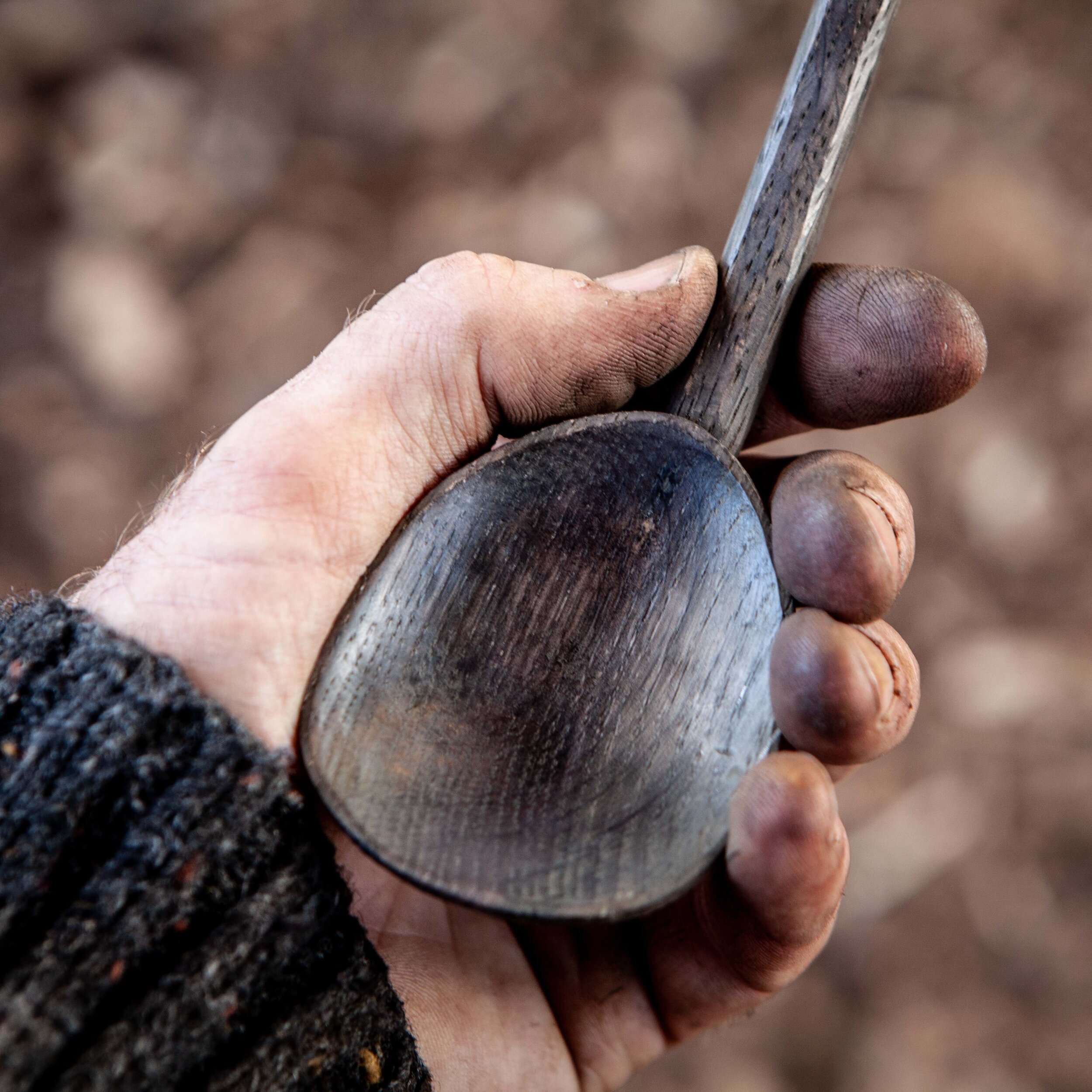Woodworker David White carves spoons, jugs and other objects out of oak that he’s salvaged from the abandoned slate mines of North Wales, which has to be one of the most Ernest projects we’ve ever encountered…
Photo by David White
David, how did you come up with the idea to create the Mine Oak collection?
I’ve always been fascinated by the slate mining landscapes of Snowdonia. It was while on a tour of the vast slate caverns that opened my eyes to how much wood was still underground. I made a couple of cups from a sample of oak I retrieved from a mine and realised the colours in the wood were completely unique. From there my imagination ran wild with the idea of weathered wood, the rugged landscape and the industrial heritage of the mines.
What was the condition of the oak that you salvaged?
The oak is very variable in condition – it can be very brittle if it’s been closer to the mine surface (nearer bacteria). The wood that’s deeper underground is more preserved; very dense, and dark in colour. The real alchemy I find in using the wood is the colouration throughout the grain, as the iron brought down to the mine has rusted down over a hundred years and made an iron-rich water that reacts with the tannins in the oak, leaving areas of black flowing through the grain like dark clouds. I never know what will be inside the wood until I remove the surfaces. I’ve taught myself to be very open to what the wood condition and colouring suggests as objects to make with it.
Were there any challenges?
The biggest challenge is getting the wood out of the mines. The tunnels linking the caverns are only about five feet high, and I’m six foot tall. The dense, sodden wood can be 30kg per piece. Once back in the workshop the challenge is to make objects while the wood is still wet, so I can use green woodworking techniques with an axe and carving knives. However carefully I dry the wood, it often splits, so I build the splitting in to my processes now and try to forsee where splits will be so I can ‘cold forge’ fill cracks with contrasting metals.
What inspired the shapes of the jugs?
The rugged, industrial looking jugs are a reaction to both the rough wood, the massive landscapes and the industry of the mines. If you imagine a roughly made slate trolley on rails underground, filled with slate and pushed along in the dark tunnels by a young boy, you see the inspiration I had for the shapes.
What's your favourite item from the collection and why?
As I started making pieces from the mine oak, I read about what working life was like in the mines and quarries of Snowdonia a century ago. There was a huge sense of pride and comradeship among the hard working quarrymen. The men self-selected into groups of five, a ‘Bargain Gang’ who would bid for work each month. In underground and cliff-side shelters called cabans, men rested between extracting slate, talking about politics, singing, reading poetry and of course drinking tea. I created a set of five caban jugs that imagine each member of the Bargain Gang; two rock men, a splitter, a dresser and a rybelwr (young apprentice learning the trade). For the two tough rock men, I used the rough weathered surface of the oak as the jug rims. The colours within the oak looked like a Welsh moorland landscape. These jugs somehow communicated everything I wanted to convey about the eerie landscapes of slate mines.
Do you have any further plans to work with salvaged wood?
The amount of inspiration I found from the mine oak versus what I would have created with fresh, green oak was quite surprising to me. I have plans to make further sets of mine oak functional objects that are even more closely linked to the rugged mountain landscapes of Snowdonia. I also want to look to the coast of north Wales with oak in mind; perhaps shipwreck oak?
Black and white images courtesy of National Slate Museum; other images by David White













